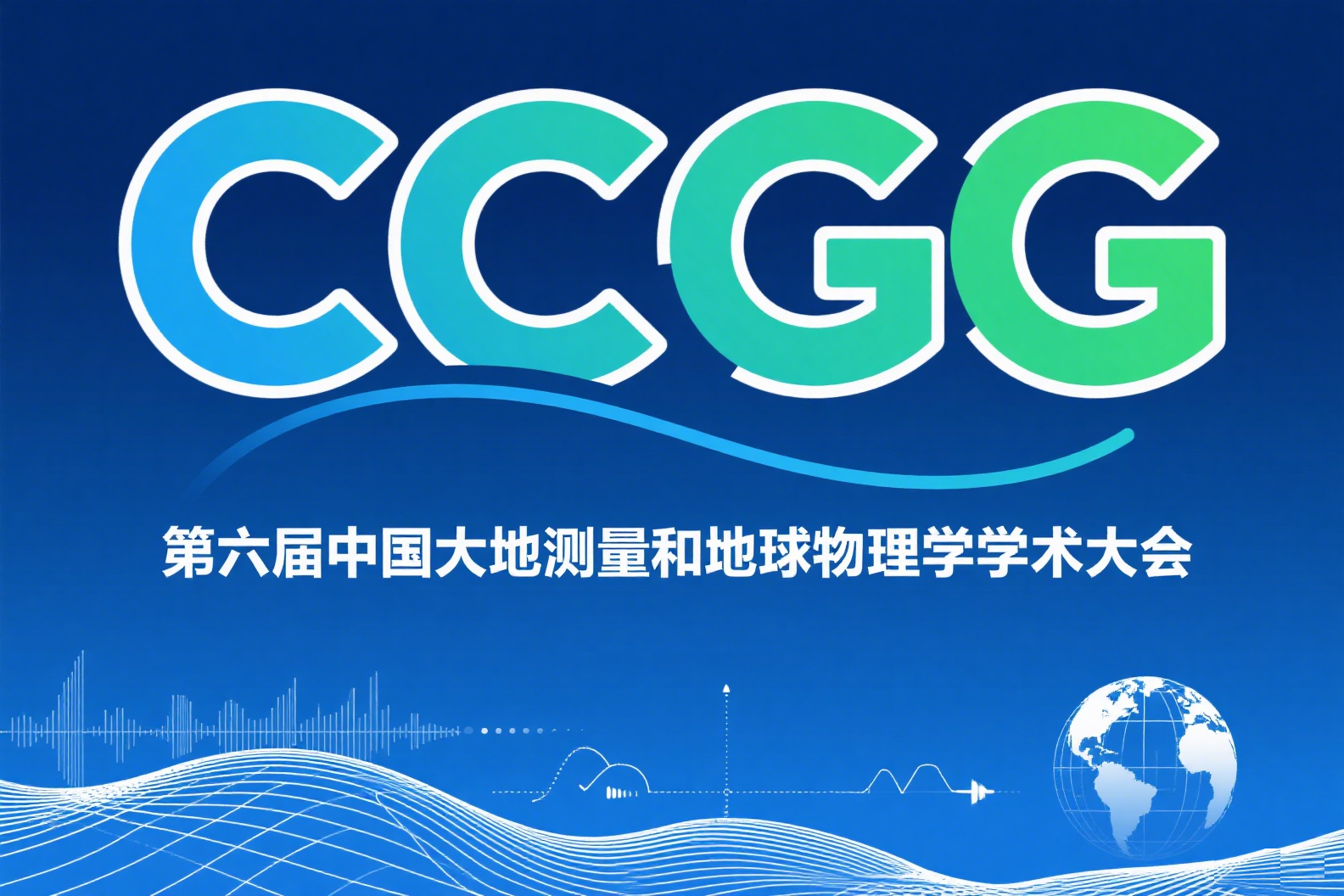The IUGG Electronic Journal Volume 17 No. 5 (1 May 2017)
INTERNATIONAL UNION OF GEODESY AND GEOPHYSICS
UNION GEODESIQUE ET GEOPHYSIQUE INTERNATIONALE
The IUGG Electronic Journal
Volume 17No. 5 (1 May 2017)
This informal newsletter is intended to keep IUGG Member NationalCommittees informed about the activities of the IUGG Associations, and actionsof the IUGG Secretariat. Past issues are posted on the IUGG website (http://www.iugg.org/publications/ejournals/).Please forward this message to those who will benefit from the information.Your comments are welcome.
Contents
1. Report on the Batsheva de Rothschild Workshop on theAtmospheric Global Electric Circuit
2. Report on the IndOOS Review Workshop
3. Report on the 38th Joint Scientific Committee Meeting ofthe World Climate Research Programme, 3-7 April 2017
4. Obituary
5. Meeting calendar
6. Good Hope for Earth Scientists – joint IAPSO-IAMAS-IAGAScientific Assembly
1. Report on the Batsheva de Rothschild Workshop on the Atmospheric Global Electric Circuit
The workshop was held from 5 to 10 February 2017 in the remote Negev Desert insouthern Israel and co-sponsored by IUGG and IAMAS. The workshop broughttogether fifty researchers and students from 16 countries to discuss the latestdevelopments and directions in the field of fair weather AtmosphericElectricity. Since the time of Benjamin Franklin we know that, in fair-weatherconditions, there is a quasi-static vertical electric field at sea level of~150 V m-1 pointing downwards to the Earth, associated with a conductioncurrent density of ~2 pA m-2 flowing continuously from the atmosphere to theground. Much subsequent research has concluded that this electricity isgenerated, and modulated, by global thunderstorm activity. The thunderstormsact like huge batteries/generators of current in the atmosphere, drivingelectrical currents upwards towards the ionosphere above thundercloud tops indisturbed weather regions, with the return currents flowing in fair weatherregions. This conceptual view is known as the atmospheric global electriccircuit (GEC).
In recent years, there has been a notable revival in fair-weather atmosphericelectricity research because of the links found between atmospheric electricityand air pollution, radioactivity, cloud microphysics, dust outbreaks, climatechange, biological processes and even space weather. Atmospheric electricitycan be used as a sensitive diagnostic of changes in our environment, but mayalso have feedbacks on our environment itself. The vertical conduction currentmay impact the charging of cloud edges, influencing droplet interactions andpossibly large-scale cloud properties themselves. Furthermore, new technologiesare allowing us to expand the frontiers of atmospheric electricity research,using drones, balloons, and unmanned aerial vehicles for collecting data.
This workshop was divided into sessions dealing with Processes andGenerators in the GEC; Local Impacts on GEC parameters; New instrumentation forstudying the GEC; and Numerical Modeling of the GEC. In addition to theformal lectures and poster sessions, two evening discussions were held relatedto 1) developing uniform methodologies for data collection and analysis so thatwe can correctly compare and share data from widely-spaced locations around theglobe, and 2) directions forward and future collaborations. Furthermore, twovisits to the Atmospheric Electricity Observatories in Mitzpe Ramon and Mt.Hermon were organized for the workshop participants, including a balloon launchfor measuring the cosmic-ray induced ionization profile above Israel. One keyconclusion from the workshop was the need for the atmospheric science communityto support the inclusion of affordable electric field meters on regularmeteorological radiosondes launched every day by national Met Offices. Addingsuch small, cheap, disposable sensors will allow us to significantly advanceour understanding of the GEC, its interaction with clouds, aerosols, cosmicrays and space weather, while allowing us to monitor long term changes in theGEC, and hence long term changes in global thunderstorm activity. Moreinformation on the workshop can be found at the website http://cgprice.wixsite.com/gec2017.
Colin Price, Head of the Workshop Committee
2. Report on the IndOOS Review Workshop
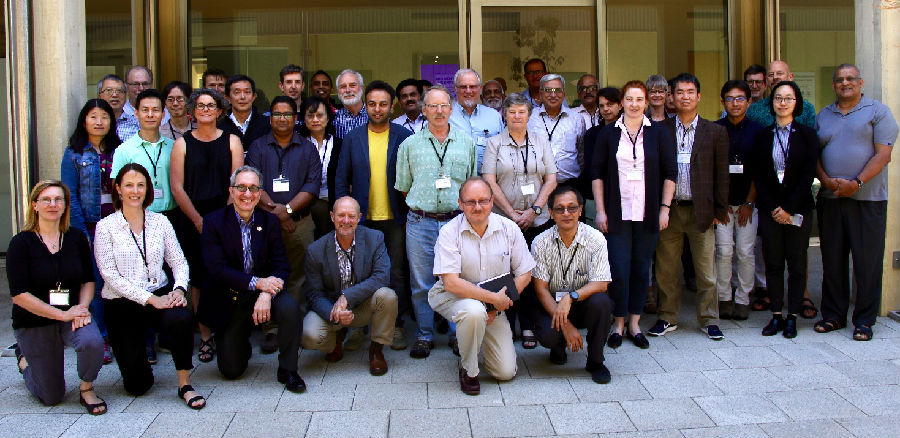
Participants to the IndOOS Review Workshop (Photo by IOC Perth Programme Office)
From 30 January to 1 February, the CLIVAR/IOC-GOOS Indian Ocean Region Panel(IORP) met for its 13th session in Perth, Australia. The main agenda item ofthe meeting was the Indian Ocean Observing System (IndOOS) Review Workshop,jointly organized with the Sustained Indian Ocean Biogeochemistry and EcosystemResearch (SIBER) panel. The workshop consisted of 24 review presentations alongthree themes: Past and present of IndOOS; new scientific drivers in the Indian Ocean;and new technologies for future IndOOS, as well as two discussion sessionscharged with identifying the scientific drivers of IndOOS and their observingrequirements. There were broad review talks on the essential science questionsand societal needs for Indian Ocean observations on the first day of theworkshop. On the second day, there were review talks on ten years of IndOOS anda look forward to the role of new technologies for the future of IndOOS. Thelast day of the workshop was dedicated to discussion sessions to outline thescience drivers and observing requirements of IndOOS, to lead towards aframework for the IndOOS review white paper.
Important outcomes of the workshop were: a mission statement for IndOOS, termsof reference for the IndOOS Review and, most importantly, a list of scientificdrivers and observational requirements for IndOOS. These science drivers willbe used as a framework for the IndOOS review. One task of the subsequent whitepaper process is to further develop these requirements in terms of essentialocean variables, their spatial coverage and temporal/spatial resolution. A teamof authors has been identified to write the IndOOS Review white paper, which isplanned to be delivered by September 2017; and a panel review of the whitepaper is planned for February 2018, alongside the next IORP meeting.
The IORP-13 was organized alongside annual meetings of IOGOOS-13, SIBER-7, andIRF-7, as well as the first Scientific Steering meeting of IIOE-2 and aBio-Argo Workshop. More details of all these events can be found at http://www.clivar.org/events/iogoosiopsiberirf-annual-meetings-and-1st-iioe-2-steering-committee-meeting-and-bio-argo.
Lisa Beal, co-chair, Indian Ocean Region Panel forCLIVAR/IOC-GOOS
Nick D’Adamo, UNESCO/IOC PPO
Jing Li, International CLIVAR Project Office (ICPO)
3. Report on the 38th Joint Scientific Committee meeting of the WorldClimate Research Programme, 3-7 April 2017
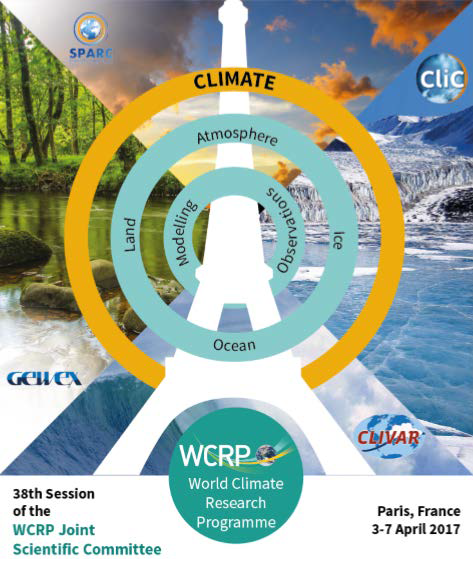
WCRP was established in 1980 under the joint sponsorship of the InternationalCouncil for Science (ICSU) and the World Meteorological Organization (WMO). In1993 the Intergovernmental Oceanographic Commission (IOC) of UNESCO also becamea sponsor. The main objectives of WCRP, defined at its inception and stillvalid today, are to determine the predictability of climate and to determinethe effect of human activities on climate. WCRP is composed of four coreprojects universally known by their acronyms as CliC, CLIVAR, GEWEX, and SPARC.The WCRP organizational chart (see Fig. 1 in the PDF file of the e-Journal)also emphasizes CORDEX, the regional downscaling project. WCRP has alsoidentified seven Grand Challenges that use the expertise within the coreprojects to examine important and topical issues. They are listed in Fig. 1.The WCRP Grand Challenge on “Water for the Food Baskets of the World” , intends to examine some of the same issues as the IAHS program Panta Rhei andit is to be hoped that a means of collaboration can be found. As shown in Fig.1, supreme operational, scientific, management and financial control of WCRPrests with the Joint Scientific Committee, JSC. The success of WCRP means thatthis operational model is the standard operational model for ICSUinter-disciplinary bodies.
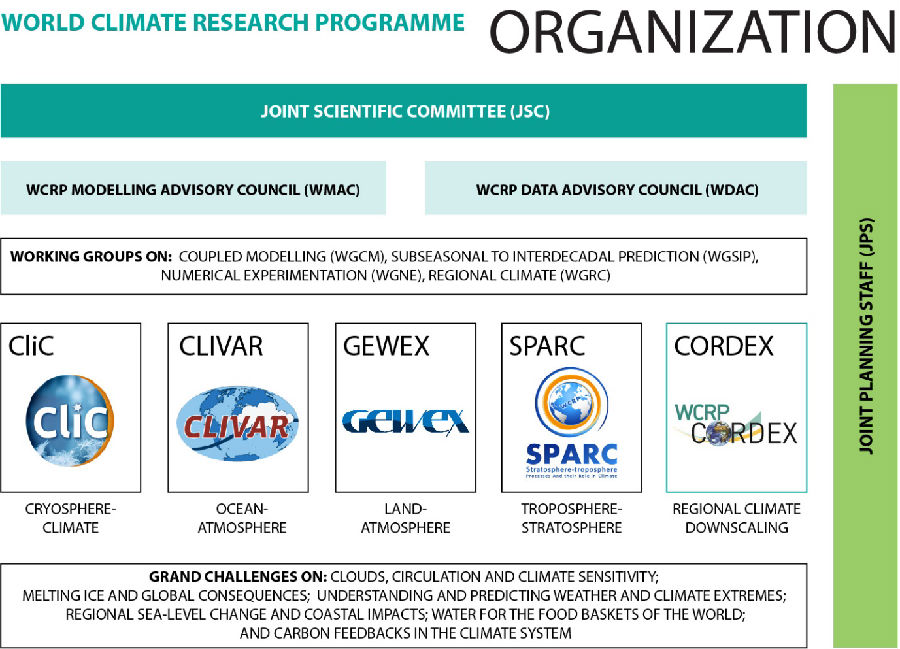
Fig. 1. Official organization chart for WCRP
The 38th Session of the WCRP JSC (see the group photo of the committee in Fig.2, in the PDF file of the e-Journal) included reports and discussions from thecore projects, from the Grand Challenges, from the two advisory councils WMACand WDAC (see Fig. 1) and from partners (including IUGG and Future Earth) aswell as the opening ceremony and discussions on communication andfinances. The agenda, documentation and presentations can be found at: https://www.wcrp-climate.org/jsc38-about. A copyof the IUGG presentation can be downloaded from: https://www.wcrp-climate.org/jsc38-agenda.
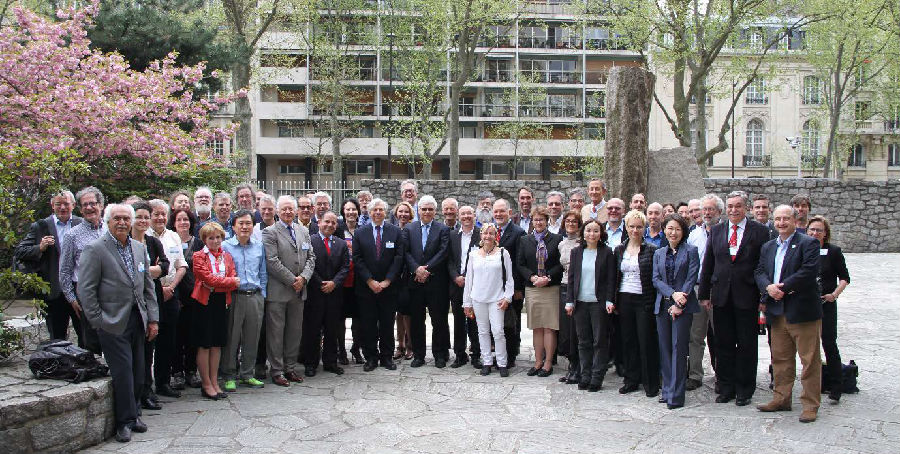
Fig. 2. Attendees at the 38th meeting of the Joint Scientific Committee of WCRP in the grounds of the UNESCO building in Paris.
Tom Beer made a presentation on IUGG, which consisted of three parts: (i) IUGG-in which the Scientific Associations were enumerated; (ii) information onscientific assemblies of IACS (Wellington, New Zealand, 12-14 February 2017,co-sponsored by WCRP), IAPSO-IAMAS-IAGA joint assembly in Cape Town, SouthAfrica, 27 August -1 September 2017, and session M17 targets the WCRP GrandChallenge on Extremes, and IAHS assembly in Port Elizabeth, South Africa, 10-14July 2017; (iii) major activities. The presentation highlighted: IAHS – PantaRhei project and CCEC – Global Change and Future Earth: The GeoSciencePerspective project.
WCRP is very active and continues to play a high profile in the internationalscientific community. The work on modelling intercomparison has been crucial tothe work of the IPCC and is very heavily quoted in the literature as shown inthe WordDoodle of Fig. 3 .
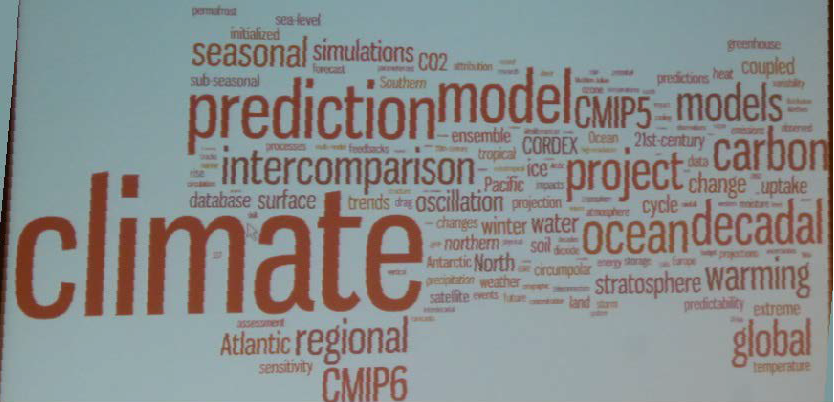
Fig. 3. WordDoodle illustrating the frequency of words in the titles of scientific papers published under WCRP auspices. The larger the font, the more frequent the word.
The JSC meeting was run by the Chair of the JSC, Guy Brasseur, and by the WCRPExecutive Director, David Carlson. There were three matters that were ofobvious concern to them: The ongoing Review of WCRP; WCRP finances; and thestate of climate science internationally.
The WCRP review panel includes: Julia Slingo (Chair), Mark New, Alan Thorpe,Steven Zebiak, Fumiko Kasuga (ex-officio member representing CSPR), SergeyGulev, and Neville Smith. The panel is tasked to: a) provide strategic directionsfor future development of WCRP, b) review scientific achievements and impactsof WCRP since 2009, c) review appropriateness and effectiveness of thegovernance, operational structure, management and resourcing of WCRP, d)identify synergies between priorities of WCRP and its co-sponsors. In February2017, WMO reduced its funding to WCRP .
Various countries at various times in the past have elected governments thatare not supportive of, and may be actively hostile, to the notion of climatechange and as a consequence reduce or terminate funding to climate science.Such considerations motivated IUGG to pass Resolution Number 7 at its 2015General Assembly. The finale of the resolution is that IUGG resolved tobe steadfast in: (1) encouraging and supporting the participation of scientistsin international scientific meetings and activities, (2) undertaking efforts toenhance fundamental understanding of geophysical processes and behavior,especially in the grand challenge areas, (3) increasing efforts to utilizescientific understanding for the benefit of society and the environment and forpromotion of the economy and societal resilience; and (4) providing anindependent voice in support of undertaking and relying on the most rigorousand well-tested scientific findings.
Tom Beer, IUGG Liaison to WCRP
4. Obituary
Attia A.-S. Ashour (1924-2017)
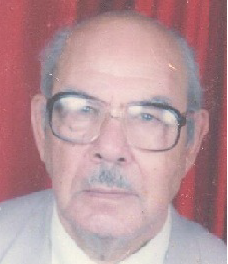 Professor Attia Abdel-Salam Ashour, President of IUGG (1975-1979), peacefullypassed away on Monday, 17 April 2017, at his Dokki residence in Cairo, at age93. Born on 13 September 1924 in Damietta, Egypt, Attia Ashour graduated fromthe Faculty of Science, Fouad 1-st University (later to become CairoUniversity) in 1944. He obtained his Ph.D. Degree in Mathematics from ImperialCollege in London, UK, in 1948. His tutors were no less than the famousscientists Sydney Chapman and Albert Price. In 1967, Ashour was granted theD.Sc. Degree in Mathematics from London University, thus becoming one of thevery few Egyptians to hold such a degree.
Professor Attia Abdel-Salam Ashour, President of IUGG (1975-1979), peacefullypassed away on Monday, 17 April 2017, at his Dokki residence in Cairo, at age93. Born on 13 September 1924 in Damietta, Egypt, Attia Ashour graduated fromthe Faculty of Science, Fouad 1-st University (later to become CairoUniversity) in 1944. He obtained his Ph.D. Degree in Mathematics from ImperialCollege in London, UK, in 1948. His tutors were no less than the famousscientists Sydney Chapman and Albert Price. In 1967, Ashour was granted theD.Sc. Degree in Mathematics from London University, thus becoming one of thevery few Egyptians to hold such a degree.
Ashour's career started at the Department of Mathematics, Faculty of Science,Cairo University in 1944 as a teaching assistant, then as a lecturer, and hereceived a professorship in Applied Mathematics in 1966. He was Head of theDepartment for a long period of time, and became a professor emeritus in 1984.Ashour acquired an international status through his innovative work inmathematics, with applications in geophysics. He contributed to several fieldsof mathematics including theory of special functions and boundary-valueproblems as well as to theoretical geomagnetism. He led an active school ofresearch in these fields and several scientists have obtained their M.Sc. andPh.D. degrees under his supervision. He was one of the few world experts on themathematical theory of electromagnetic induction. Several applications carryhis name. Ashour was Visiting Professor to many scientific Institutionsworldwide.
Ashour was elected a member of the Egyptian Academy of the Arab Language in1990. Ashour was the holder of many national and international prizes for hisscientific work and for his national and regional efforts in diffusing andstrengthening mathematical knowledge, The Order of Merit of Arts and SciencesFirst Grade, three times in 1966-1986 and 1988, The Order of Merit of theRepublic of Egypt of the Fifth Grade in 1954 and of the second Grade in 1984,The Medal of the African Mathematical Union in 1990. Ashour was grantedChevalier dans l'Ordre de La Palme Académique by the French Government in 1985,and Chevalier dans l'Ordre National de Mérite from the French President in 1995for his efforts in developing Egyptian-French scientific cooperation. Ashourwas a Fellow of the Royal Astronomical Society (RAS) since 1954, and waselected a Foreign Associate of RAS, the highest recognition offered by thissociety for foreign scientists, in 1978. He served as a member of the AdvisoryBoard to the Director General of UNESCO on Science and the 21st Century,President of the Arab Union of Mathematicians and Physicists (1975-1977),Vice-President of the African Mathematical Union (1976-1986). He was Chairmanof the IAGA Interdivisional Working Group on International and External Fields(1973-1979). Ashour was elected Vice-President of the IUGG in 1971 andPresident of IUGG in 1975. Ashour was the Head of the International Center forPure and Applied Mathematics (CIMPA) at Nice, France (1992-1996), and member ofits Administrative Council (1997-2000). He is a founding member of the ArabAcademy of Sciences. Ashour was a member of the Institut d'Egypte, and amultitude of other national and international scientific organizations.
He will be missed by his numerous students and colleagues, and all who knewhim. He is survived by his wife Karima and his daughter Zeinab, currentlyProfessor at the Faculty of Medicine, Cairo University. May God bless his soul.
Submitted by Ahmed Hady, Cairo University, Egypt
5. Meeting calendar
A calendar of meetings of interest to IUGG disciplines (especially thoseorganized by IUGG Associations) is posted on the IUGG website (http://www.iugg.org/calendar.php). Individual Associationsalso list more meetings on their websites according to their disciplines.
May
- 17-19, IAG, Wroclaw, Poland, EUREF 2017 Symposium.
Web: http://www.igig.up.wroc.pl/euref2017
- 20-25, JpGU, AGU, Makuhari, Japan, JpGU-AGU Joint Meeting2017.
Web: http://www.jpgu.org/meeting_e2017/
- 22-24, IAG, London, UK, DORIS Analysis Working Groupmeeting (AWG) of the International DORIS Service. Web: http://ids-doris.org/ids/reports-mails/meeting-presentations/ids-awg-05-2017.html
- 22-26, UNISDR, Cancun, Mexico, 2017 Global Platform for DisasterRisk Reduction.
Web: http://www.unisdr.org/conferences/2017/globalplatform/en
- 22 May – 2 June, ICTP, IUGG, Trieste, Italy, ExtendedWorkshop on Space Weather Effects on GNSS Operations. Web: http://indico.ictp.it/event/7964/
- 29 May – 2 June, ILC, Ljubljana, Slovenia, The Fourth WorldLandslides Forum 2017.
Web: https://www.wlf4.org/
- 31 May – 2 June, GEO, College Park, MD, USA, 3rd BluePlanet Symposium.
Web: http://symposium.geoblueplanet.com/
June
- 6-9, ISPRS, Hanover, Germany, ISPRS Hannover Workshop 2017.
Web: https://www.ipi.uni-hannover.de/hrigi17.html
- 11-17, IACS, SCAR, Fort Collins, CO, USA, 2017 GlacialSeismology Training School. Web: http://polenet.org/?page_id=2769
- 12-23, ICTP, IUGG, Trieste, Italy, Fourth Workshop on WaterResources in Developing Countries: Hydroclimate Modeling and Analysis Tools.
Web: http://indico.ictp.it/event/7969/
- 18-23, IAHS, UNESCO, Birmingham, UK, HydroEco 2017: The 7thInternational Multidisciplinary Conference on Hydrology and Ecology.
Web: http://www.birmingham.ac.uk/generic/hydroeco2017/index.aspx
- 25-30, IAMAS, Helsinki, Finland, ICNAA2017 - 20thInternational Conference on Nucleation and Atmospheric Aerosols. Web: http://www.icnaa2017.net/
- 26-30, CTBTO, Vienna, Austria, The CTBT: Science andTechnology 2017 Conference (SnT2017). Web: https://ctnw.ctbto.org/DMZ/snt2017.html
July
- 2-7, ICA, Washington, DC, USA, ICC 2017 - 28thInternational Cartographic Conference.
Web: http://icc2017.org/
- 3-5, UCPS, Berlin, Germany, 1st IUGG Symposium on PlanetaryScience (IUGG-PS 2017) - Interdisciplinary observation and understanding of theSolar System.
Web: http://www.dlr.de/iugg-ps2017
- 3-5, NC BRAZIL, IAMAS, Sao Paulo, Brazil. São Paulo Schoolof Advanced Science on Climate Change: Scientific Basis, Adaptation,Vulnerability and Mitigation.
Web: http://www.incline.iag.usp.br/data/spsascc
- 3-7, IAG, Paris, France. 2017 IGS Workshop.
Web: http://kb.igs.org/hc/en-us/articles/216574478-IGS-Workshop-2017
- 7-9, IUGG, IAMAS, Toulouse, France. Training Workshop on Processingof Cloud Particle Measurements.
Web: http://www.halo.dlr.de/plans/documents/TrainingWorkshopPreliminaryAgenda.pdf
- 9-15, IAHS, Port Elizabeth, South Africa. IAHS ScientificAssembly 2017.
Web: http://cwrr.ukzn.ac.za/iahs/call-for-papers/iahs-2017-in-south-africa---invitation
- 10-12, IAG, Paris, France, Unified Analysis Workshop.
Web: http://ggosdays.com/en/conferences/unified-analysis-workshop
- 10-14, WCRP, UNESCO-IOC, New York City, NY, USA.International WCRP/IOC Conference on Regional Sea Level Changes and CostalImpacts.
Web: https://www.wcrp-climate.org/images/WCRP_conferences/Regional_Sea_Level_Changes_and_Coastal_Impacts/SeaLevel-Conference-2017-Flyer.pdf
- 16-29, CODATA, Beijing, China, CODATA InternationalTraining Workshop in Open data for Better Science, for Researchers from Lowerand Middle Income Countries. Web: http://www.codata.org/news/159/62/Apply-for-CODATA-International-Training-Workshop-in-Open-Data-for-Better-Science-Deadline-25-April-2017
- 25-27, GRC, IAG, Sendai, Japan, 2017 GNSS Tsunami EarlyWarning System Workshop. Web: https://geodynamics.org/cig/events/calendar/gnss-workshop/
- July 30 - August 4, IAG, IASPEI, Kobe, Japan. IAG-IASPEIJoint Scientific Assembly 2017. Web: http://www.iag-iaspei-2017.jp/
6. Good Hope for Earth Scientists – joint IAPSO-IAMAS-IAGA ScientificAssembly
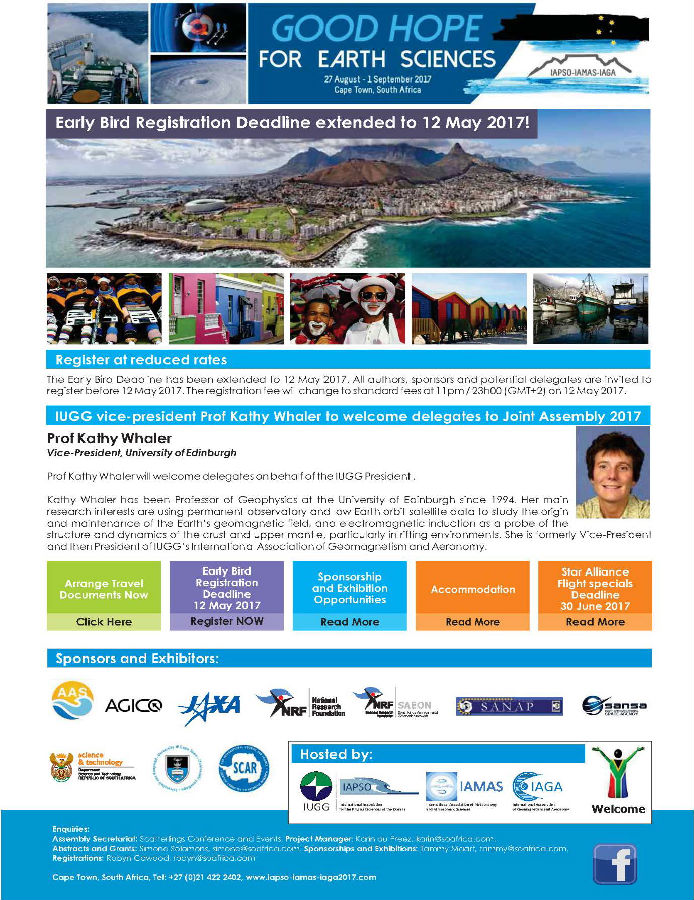
.
IUGG Electronic Journal Volume 17 Number 5 (1 May 2017)
Editors: Tom Beer, Alik Ismail-Zadeh (Editor-in-Chief), Franz Kuglitsch(Associate Editor), and Kathryn Whaler.
If you no longer wish to receive the IUGG Electronic Journal, please send anemail to the IUGG Secretariat (secretariat@iugg.org).
